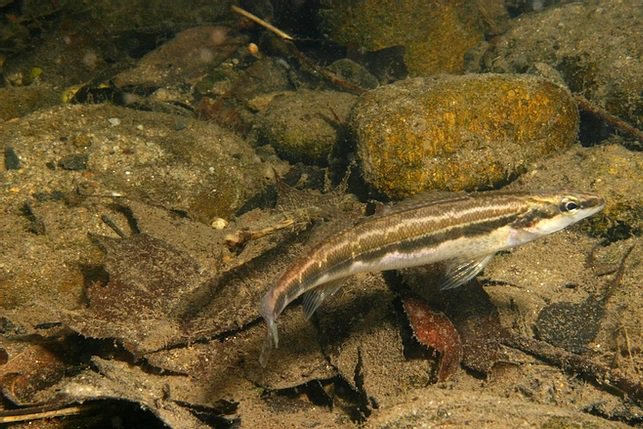For Immediate Release, November 10, 2020
|
Contact: |
Tierra Curry, (928) 522-3681, tcurry@biologicaldiversity.org |
Sickle Darter Proposed for Endangered Species Act Protection in Tennessee, Virginia
Little Fish Threatened by Pollution, Mining, Logging
KNOXVILLE, Tenn.— In response to a 2010 petition and 2015 agreement with the Center for Biological Diversity, the U.S. Fish and Wildlife Service proposed today to protect the sickle darter under the Endangered Species Act.
“Protecting the sickle darter under the Endangered Species Act will bring funding and a recovery plan to save this little fish from extinction,” said Tierra Curry, a senior scientist at the Center for Biological Diversity. “It will also help safeguard the Appalachian rivers it calls home.”
The sickle darter is threatened by siltation that fills the spaces in between rocks on the river bottom that the fish needs to lay eggs and find prey, water pollution from agriculture, logging and mining, and dams that separate its populations. The Service is not currently proposing critical habitat protections for the fish because the agency is still conducting an economic analysis.
In Tennessee there are populations of the sickle darter in the Emory, Little and Sequatchie rivers. These populations are separated from populations in the upper Clinch, and Middle and North Fork Holston rivers in Virginia. The fish has been wiped out in North Carolina, where it was once found in the French Broad, South Fork Holston, Powell and Watauga rivers.
“Decades of damage to our rivers has sharply magnified the extinction risk for freshwater animals,” said Curry. “This should be an eye-opener for humans since our own wellbeing is also dependent on the health of our rivers.”
The sickle darter is large by darter standards, growing to be nearly 5 inches long. It has larger scales than other darters and a prominent black stripe on its side. It uses its large mouth and long pointed snout to feed on larval mayflies, midges, riffle beetles, caddisflies and dragonflies. Sickle darters can live up to four years.
It was first described as a species in 2007 when it was found to be distinct from the closely related longhead darter. The scientific name is Percina williamsi, honoring the renowned biologist Jim Williams, who has been working to describe and protect freshwater species from the southeastern United States for more than half a century.

The Center for Biological Diversity is a national, nonprofit conservation organization with more than 1.7 million members and online activists dedicated to the protection of endangered species and wild places.

